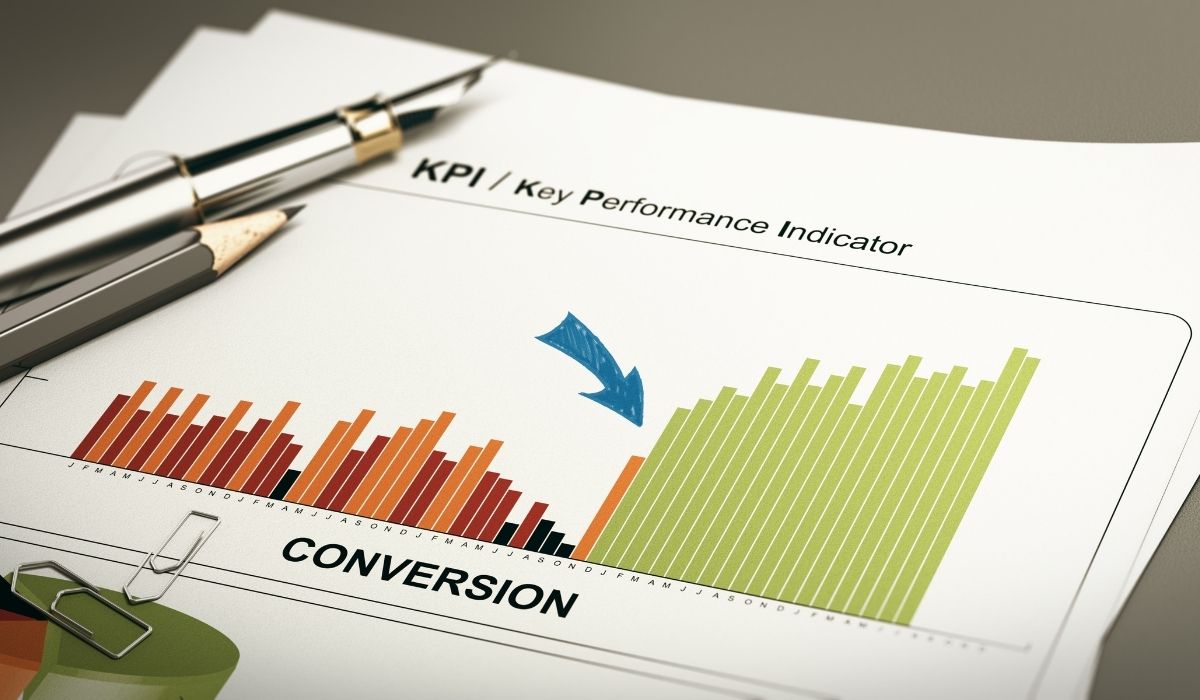You’ve worked hard to drive traffic to your website — but if your visitors aren’t taking action, then that traffic is just potential, not progress.
That’s where Conversion Rate Optimization (CRO) comes into play.
CRO is all about enhancing the user journey, tweaking the right website elements, and guiding users toward desired actions — whether that’s subscribing to a newsletter, filling out a contact form, or making a purchase.
Regardless of whether you operate an eCommerce store, service-based business, or content-driven blog, conversion rate optimization can unlock the full potential of your website.
In this comprehensive guide, we’ll explore the ins and outs of CRO, how to calculate and track conversion rates, and proven strategies to improve performance and maximize ROI.
What Is Conversion Rate Optimization?
Conversion Rate Optimization (CRO) refers to the process of increasing the percentage of website visitors who take a specific action, such as completing a purchase, requesting a quote, or subscribing to a service.
Rather than just increasing website traffic, CRO focuses on getting more value from the traffic you already have.
This is achieved by understanding user behavior and optimizing the website’s design, copy, and functionality to enhance user experience and minimize friction.
How to Calculate Your Conversion Rate

The formula for conversion rate is simple:
Conversion Rate = (Number of Conversions / Total Visitors) x 100
Example: If your website had 500 conversions from 20,000 visitors last month:
(500 / 20,000) x 100 = 2.5%
Tools like Google Analytics, HubSpot, or CRO-specific platforms like Optimizely can automatically track this for you.
These tools also offer deeper insights into conversion funnels, bounce rates, and user behavior.
What Is a Good Conversion Rate?
Conversion rates vary widely depending on industry, product, target audience, and traffic sources.
- eCommerce: 2% – 3% is average
- Lead generation websites: 5% or higher is considered good
- SaaS or subscription services: 7% or more for free trials
Even if your conversion rate is above average, there’s always room to improve. Small tweaks can lead to significant increases in ROI over time.
Key Benefits of Conversion Rate Optimization
1. Lower Customer Acquisition Costs
Instead of spending more on advertising to increase traffic, CRO helps you make the most of your current visitors, decreasing the cost per acquisition (CPA).
2. Higher Return on Investment (ROI)
Improving your conversion funnel means more customers and revenue without extra marketing spend, which directly enhances your ROI.
3. Improved SEO Performance
CRO-friendly elements like fast page speeds, mobile responsiveness, and engaging content positively impact your search rankings, drawing in more organic traffic.
4. Better User Experience
Optimizing your website leads to more intuitive navigation, reduced bounce rates, and higher satisfaction — all of which support long-term brand loyalty.
The Conversion Rate Optimization Process
A systematic approach is crucial for successful CRO. Here’s a step-by-step breakdown:
Step 1: Set Clear, Measurable Goals
Begin with defining SMART goals — Specific, Measurable, Achievable, Relevant, and Time-bound. Examples include:
- Increase newsletter sign-ups by 20% in three months
- Reduce cart abandonment by 10% this quarter
- Grow contact form submissions by 15%
Step 2: Understand Your Audience
Use analytics, heatmaps, surveys, and customer feedback to discover how users interact with your site.
Look for pain points, behavior trends, and friction that might prevent conversions.
Step 3: Audit Your Website
Evaluate landing pages, product descriptions, checkout pages, and navigation menus. Check for issues like:
- Slow load times
- Confusing layouts
- Poor mobile optimization
- Weak or missing calls-to-action (CTAs)
Step 4: Implement Strategic Changes
Make data-driven changes based on your audit. These could include:
- Revising your copy to better highlight benefits
- Simplifying your forms
- Enhancing CTAs
- Redesigning product images
Step 5: Run A/B Tests
A/B testing (also called split testing) allows you to compare two versions of a webpage element to see which performs better. Examples:
- CTA button color or text
- Page headlines
- Product page layout
Use tools like Google Optimize, VWO, or Optimizely to manage tests.
Step 6: Analyze Results and Optimize Further
Once data is collected, determine which version performed better. Implement the winning variation and continue testing other elements to refine and improve further.
Best Practices in Conversion Rate Optimization
Use Analytics and Heatmaps
Tools like Google Analytics, Hotjar, Crazy Egg, and Microsoft Clarity provide insights into user behavior. They help you:
- Identify exit points and bounce rates
- Visualize user clicks and scroll behavior
- Analyze traffic sources and conversions
Improve Page Load Speed
A one-second delay in load time can reduce conversions by 7% or more.
Use Google PageSpeed Insights and compress images, reduce redirects, and enable browser caching to improve performance.
Optimize for Mobile Users
Over half of all web traffic comes from mobile devices. Use responsive design, minimize pop-ups, and make sure CTAs are thumb-friendly to ensure a smooth mobile experience.
Simplify Your Navigation
Confusing menus and too many choices can overwhelm visitors.
Keep your navigation clean, intuitive, and focused on the most critical actions.
Create Strong, Compelling CTAs
Your CTA should be clear, action-oriented, and easy to find.
Use contrasting colors and persuasive language such as “Get Started,” “Claim Your Discount,” or “Try It Free.”
Build Trust with Testimonials and Reviews
Social proof boosts credibility. Display customer reviews, star ratings, and third-party trust badges to reassure potential buyers.
Use Live Chat or Chatbots
Real-time support reduces drop-offs and increases confidence.
Use live chat on product and pricing pages to answer objections and offer assistance.
Leverage Video Content
Video can increase conversions by up to 80%. Use explainer videos, product demos, or customer testimonials to boost engagement and trust.
Remove Distractions from Landing Pages
Keep landing pages focused with minimal navigation and a single, clear objective.
Eliminate unnecessary links or unrelated content that may distract users.
Additional CRO Tips to Maximize ROI
- Retargeting Campaigns: Use retargeting ads to bring back visitors who didn’t convert on their first visit.
- Personalization: Show personalized content or offers based on a user’s behavior or location.
- Exit-Intent Popups: Trigger pop-ups when a visitor is about to leave your site, offering discounts or lead magnets.
- User Testing: Conduct usability tests with real users to identify issues that data alone might miss.
Conclusion: CRO Is an Ongoing Journey
Conversion Rate Optimization isn’t a one-time task — it’s a continuous process of learning, testing, and improving.
By focusing on user behavior and employing smart CRO strategies, you can transform your website into a high-converting sales machine.
Whether you’re aiming to increase sales, leads, or sign-ups, CRO gives you the tools and insights to get more value from your existing traffic — ultimately delivering higher ROI and long-term growth.
Ready to optimize your website for better conversions?
Start today by auditing your site, defining your goals, and running your first A/B test. The results will speak for themselves.
Hey there! We’re TopLine Media Group—your go-to digital partner since 2007.
Founded by Brooks Donner, TLMG is a passionate crew of creatives and strategists who love everything digital.
From SEO and social media to web design, content writing, graphics, and video—we’ve got you covered.
We work with businesses big and small, helping them shine online and hit their goals.
Got a project or an idea? Let’s chat! Give us a call or shoot us an email—we’re all ears and ready to dive in.
FAQs
What is Conversion Rate Optimization (CRO)?
CRO is the process of increasing the percentage of website visitors who take a desired action—such as making a purchase, filling out a form, or signing up for a newsletter—through strategic design, messaging, and user experience improvements.
Why is CRO important for ROI?
CRO directly impacts your ROI by making the most of your existing traffic. Rather than investing more in traffic acquisition, CRO helps convert more of the visitors you already have, boosting your revenue without additional ad spend.
How is conversion rate calculated?
Conversion rate = (Number of conversions / Total visitors) × 100.
For example, if 50 out of 1,000 visitors make a purchase, your conversion rate is 5%.
What are some common CRO techniques?
Top techniques include A/B testing, improving website speed, simplifying navigation, optimizing CTAs, using heatmaps, and enhancing mobile usability.
How long does it take to see CRO results?
It depends on traffic volume and the complexity of changes. Some improvements show results within a few weeks, while more significant tests or redesigns may take 1-3 months for measurable impact.
What tools are best for CRO?
Popular CRO tools include Google Optimize, Hotjar, Crazy Egg, Optimizely, Unbounce, and HubSpot. These help with A/B testing, user behavior tracking, and landing page optimization.
Should CRO focus more on desktop or mobile?
Both are crucial, but with increasing mobile traffic, optimizing for mobile users is essential. A mobile-friendly design ensures you don’t lose conversions from smartphone and tablet users.
What is A/B testing in CRO?
A/B testing involves comparing two versions of a webpage or element (like a headline or CTA button) to see which performs better in terms of conversions or engagement.
How does user experience (UX) affect CRO?
A smooth, intuitive UX increases trust and reduces friction, leading to higher conversion rates. Clear navigation, fast loading times, and relevant content are all key factors.
Can CRO benefit small businesses?
Absolutely. Even small increases in conversion rates can lead to significant revenue growth for small businesses, especially when advertising budgets are limited.



